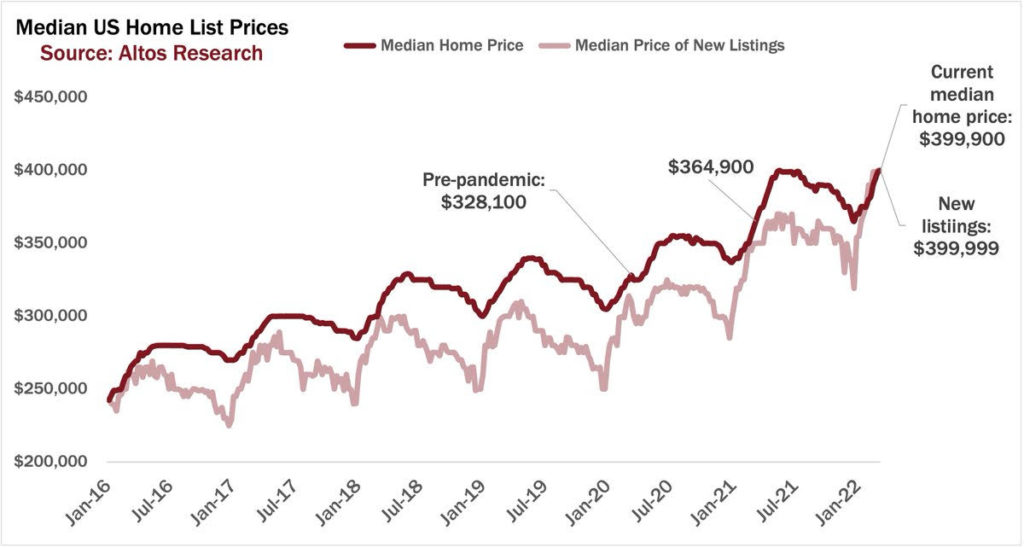We live in times of widely contrasting information and opinions. One of the best examples of this is in the real estate market, especially in Idaho.
Some opinions say that the housing market prices are overvalued and that there is an impending crash at any moment. In contrast, other opinions maintain that the value of homes will only continue to rise and that there is no way that prices could come down.
So, what’s REALLY going on in the housing market?
The key to understanding the current and projected prices of homes lies in one question: Does the balance in the market justify the current price?
What Makes a Housing Market Balanced?
In general, the market value of a home fluctuates based on the balance of two factors: available inventory and buyer demand.
Available Inventory
When the number of available homes in an area is higher, potential buyers have many more options. So, sellers will need to sell at a lower price to be more competitive.
However, when available homes are more scarce, sellers can afford to raise the prices on their inventory, as buyers are more likely to place more competitive offers.
Buyer Demand
Availability alone isn’t enough to determine the market value of a home. Even if available houses in an area are scarce, it doesn’t mean much if no one is there to buy them.
This is where buyer demand acts as a counterbalance to availability. Higher levels of demand can still create competition between buyers. It’s common in high-demand areas for buyers to place offers well above the asking price to outbid other competing buyers.
The Balance
Both factors affect the market value of homes differently. Inventory availability directly relates to home prices, while demand has an inverse relationship.
By that logic, we can make the following conclusions.
Areas with high availability and high demand can have a fairly equalized environment, resulting in more moderate home prices.
Areas with high availability and low demand favor the buyer more than the seller, resulting in lower home prices.
Areas with low availability and high demand favor the seller more than the buyer, resulting in higher home prices.
With these three potential conclusions in mind, let’s look at the data.
What Does The Current Supply/Demand Balance Look Like?
Availability
The following chart notes the total number of available single family homes in the US over the past 7 years.

As you can see, the general availability of homes has been decreasing. While most years have a seasonal fluctuation, 2020 marked a drastic break from this pattern.
Buyer Demand
The following chart notes the median days on the market.

The median days on the market are a reliable indicator of buyer demand. When a home sells in less time, it usually indicates a greater level of demand. So, in this case, we see a drop in median days on the market since 2020, indicating a generally higher level of demand in the housing market.
The Balance
Based on the previous figures, we see that overall, there is a sharp decrease in available housing inventory and a rise in buyer intent.
By that logic, we should expect in the following chart to see an increase in the median home prices in the US.

Throughout all of these charts, we saw significant changes in 2020. The obvious catalyst for these changes in the market was the COVID-19 pandemic. With such a life-changing event comes many reasons people would have to hold on to their current house or invest in a new property. Whether individuals have a sense of reluctance to sell or relocate in the midst of a pandemic, or they seek to hold on to properties to preserve wealth in potential economic hardship, the COVID Era marked a drastic change in the valuation of homes.
What About Idaho?
It’s no secret that Idaho has experienced a drastic increase in home value in recent years, even compared to the rest of the nation.
As far as Idaho home availability is concerned, while we’re seeing more homes becoming available, it is still not enough to match the high demand levels.
The COVID Pandemic and its consequent lifestyle changes have played a major role in out-of-state migrations. Given that many have the option to work remotely, many people are leaving states with higher costs of living (such as California, Washington, Oregon, New York, etc.) in favor of states like Idaho. Since they’re coming from states with even higher costs of living, they are better able to place more competitive offers on Idaho houses.
There are also many homes that are not returning to the market. Instead, many homeowners are holding on to their homes and choosing to rent them out; as opposed to just selling and trading up for a new home.
Final Thoughts
In conclusion, while we find that Idaho home values are rising at an increased rate, the balance between availability and demand does reinforce and justify current costs.
As far as future projections are concerned, it isn’t looking to slow down in the future. Factors like inflation, continued out-of-state migration, and limited inventory are likely to persist for the foreseeable future.
While it may be unfortunate for those hoping that the market would face a sharp decline, this assessment is only a direct reflection of the data and circumstances presented.
However, should external events change, prices may change further along the road. As a realtor, I always do my best to look ahead and to give honest advice and speculation regarding the housing market and the right time to buy or sell your home.
If you want to learn more or to schedule a consultation or home assessment, Contact me here or call me at (208) 401-4066 to get started.





